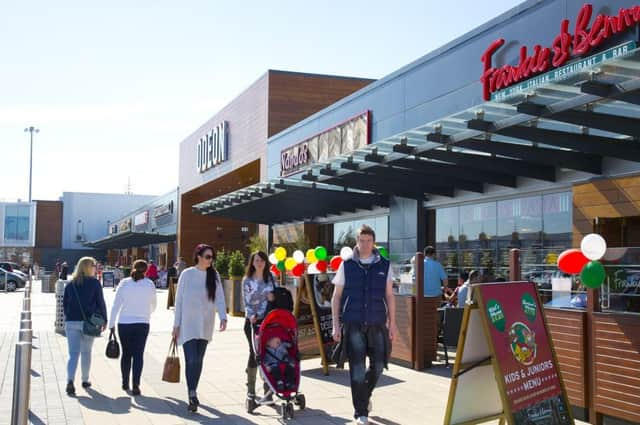Commercial property: malls adapt to survive


Since then, shopping centres have spread worldwide but are now facing their own challenges.
The biggest in the United Kingdom, the MetroCentre in Gateshead, offers customers 1.8 million square feet of retail space, and 342 stores.
Advertisement
Hide AdAdvertisement
Hide AdIt is dwarfed by complexes such as the Dubai Mall in the United Arab Emirates, which has more than 1,200 shops.
But to survive in an age when internet shopping is on the rise, shopping malls have to adapt.
Dubai Mall is a good example. Alongside the shops is a five-star hotel, 22 cinema screens, an indoor skydiving centre, one of the largest aquariums in the world, and 120 restaurants and cafes.
While the UK has nothing on that scale, Scottish shopping centres have to follow the principle of diversification, according to John Menzies, partner in retail services at Cushman & Wakefield.
He says: “Over the last ten to 15 years, landlords of malls have had to react to sweeping changes in the way their customers spend their money.
“The most successful have turned shopping malls into a customer experience, with lots of other ways to increase spend and what is called dwell time – how long people stay.”
The increasing presence of food and beverage options in shopping centres – often accounting for more than 20 per cent of units in new and redeveloped schemes – is being driven by rapid global growth in consumer spending on eating out, according to a report from Cushman & Wakefield.
With such spending expected to continue growing over the next ten years, and consumers’ desire to enhance a shopping trip with social and leisure experiences, a compelling food and beverage offering is critical to the success of any retail scheme.
Advertisement
Hide AdAdvertisement
Hide AdMenzies says in the UK, landlords and developers who invest will see a good return. “Restaurants are particularly important to continuing profitability but adapting can require a great deal of investment.”
He cites the example of Silverburn shopping centre to the south of Glasgow, one of Scotland’s largest, which was redeveloped in 2015 with a 14-screen cinema and 11 restaurants.
Menzies says: “It has since seen a 10 per cent rise in visitor numbers in a climate where internet shopping means visitor numbers are dropping across the board.”
On a smaller scale, Eastgate shopping centre in Inverness is undergoing expansion to allow for four restaurant units including the American chain Smashburger and Italian food specialist Wildwood.
Over the last decade there has been a huge growth in national chains in shopping centres, in the category of “casual” restaurants.
These offer sit-down meals for an average price of £17 per head, in places such as Wagamama, Frankie & Benny’s, and Nando’s, but Menzies thinks the rise of this type of restaurant will now slow, to be replaced by a boom in the smaller “fast casual” eateries.
He says: “We are likely to see more ‘grab and go’ outlets, which occupy less floor space and sell at a lower price point.
“Food from Taco Bell, Tim Hortons and artisan pizza by the slice are likely to be the next thing we go to the shopping mall for.”